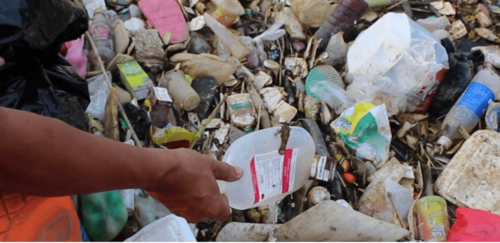COVID-19 Fuels Medical Waste Crisis in Indonesia

COVID-19 Fuels Medical Waste Crisis in Indonesia
Waste disposal has long been a concern of environmentalists and urban planners alike. Indonesia is not unique in its ever-increasing output of refuse that must be set aside in massive landfills. The country has over 400 landfills on nearly 22,240 acres of land, where piles of trash reach as high as 40 meters in the Jakarta area. Often waste is dumped in these open landfills without proper management, and some trash may never even make it to a landfill – instead being burned or left in the street.
But lately the Indonesian waste management system has met with a new challenge: medical waste disposal. According to Dr. Dawam of the Cibinong Science Center, half of the urban population in Indonesia wears disposable masks. The regular changing and disposal of masks alone produces an enormous amount of waste destined for landfills. In addition to masks, other PPE, intravenous drip bags, needles, and COVID-19 test kits are all contributing to the rising amount of medical waste in the country. According to the UN Environmental Program, the rate of medical waste disposal in Jakarta and several other major Asian cities has risen by 500% during the COVID pandemic.
By law, medical waste should be sterilized or incinerated prior to disposal. Some hospitals operate their own in-house incinerators, the most cost-effective method of treating the waste. But incinerators are expensive and require proper licenses – only 4% of Indonesia’s three thousand hospitals have the license to operate an incinerator. Even less cost effective is the outsourcing of waste treatment to third parties. Instead, it is far cheaper for hospitals to dump their medical waste illegally than pay for its removal and treatment.
While the volume of medical waste in Indonesia may be modest compared to other industries, it is particularly hazardous to local communities. Scavengers who gather and sell medical waste via informal channels must handle dangerous items like IV drip lines and needles risk infection or chemical burns. In 2020, Indonesia’s Cisadane River was flooded with excess medical waste including syringes and hazmat suits. This issue is ongoing, and it remains to be seen whether Indonesia’s government will take action to mitigate the problem. Some possible approaches include providing medical clinics with subsidized incineration technology or relaxing restrictions on licenses needed to operate medical incinerators.
Sources:
https://pulitzercenter.org/stories/indonesias-steady-stream-medical-waste
https://www.aljazeera.com/features/2021/10/1/indonesia-pandemic-fuelled-problem-covid-medical-waste
https://www.reuters.com/article/us-health-coronavirus-indonesia-waste/in…